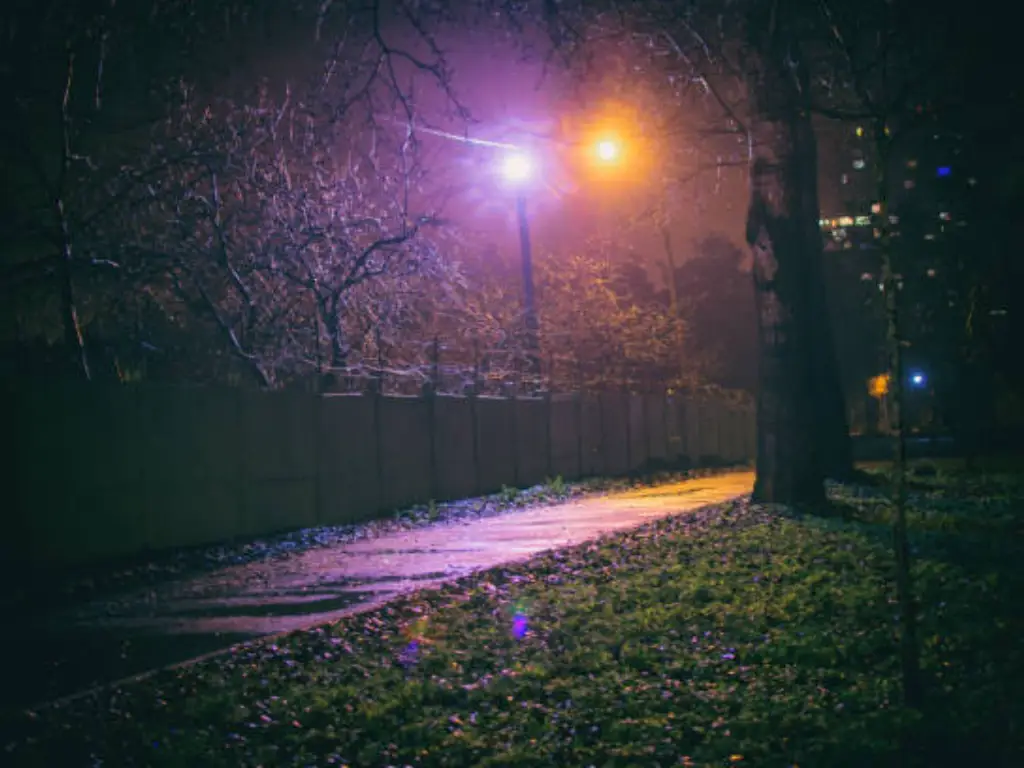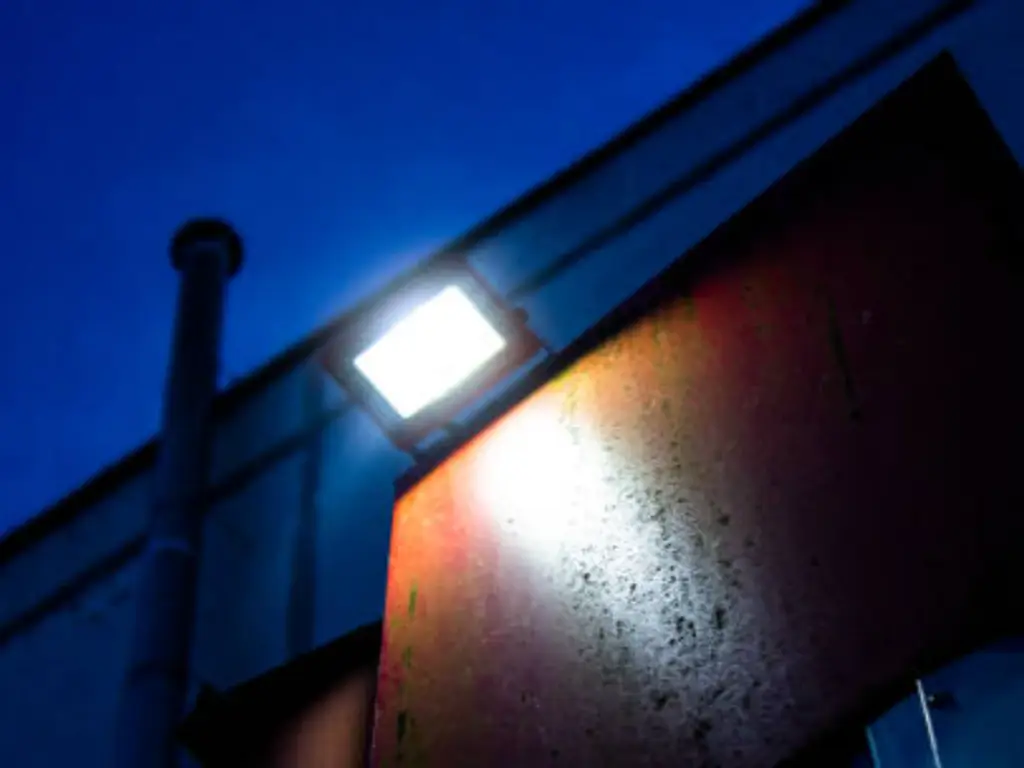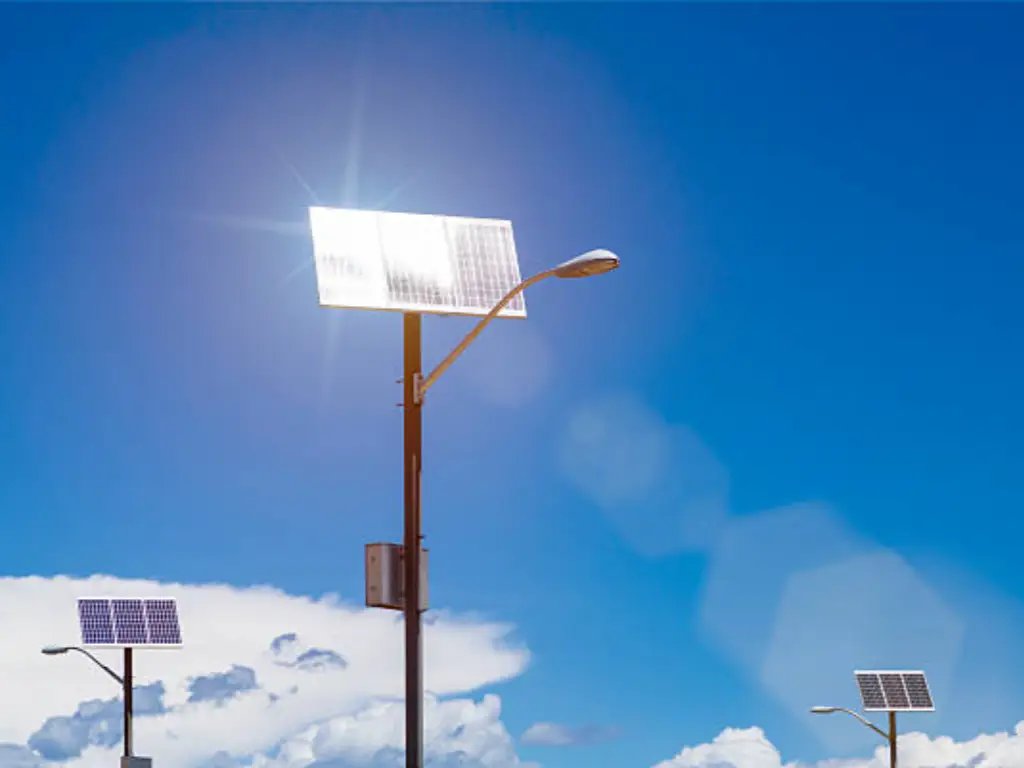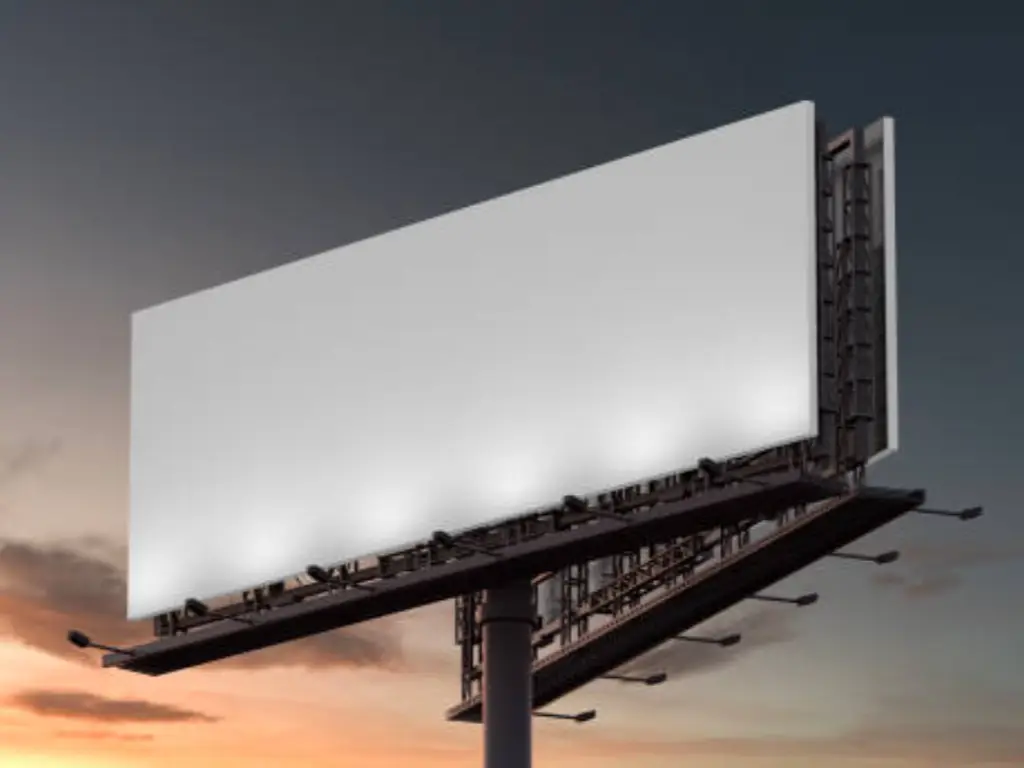Preface
Have you at any time been intrigued with the stalk lights appearing bluish purple in your city or business premises? Do not give it a second thought as it is not an isolated case since purple street lights have emerged in many cities in Canada and the United States. This strange street lamp has sparked a different sort of purple light meaning debate leaving many skeptical with sentiments like, “What does the purple lights mean?” and “Are purple street lights harmful?” This the issue has aroused curiosity and further spurred questions pertaining to the technology involved in crafting the streetlights in questions and its effects on nature and ecology.
In this article, we will investigate the issue of purple hue emitted by some of the street lamps, sheds some more light on the problems that LED lighting companies face, and tries to touch on the subject connected to green energy. We will also discuss the alleged implications of these purple streetlights in cities on security and the beauty of the metropolis.
Understanding LED Technology in Street Lighting
The wide adoption of LED technology (light-emitting diode) has transformed the lighting industry in a big way and offers longevity, energy efficiency, and multifunctional usage. A good number of cities have replaced with LED street lighting, which is a significantly cheaper and greener option compared to HPS lamps. Owing to their design, LED street lamps use less energy, which in turn translates to cheaper electric bills and a decrease in carbon emissions. Furthermore, since they are long-lasting, with an average lifespan of 25,000 hours or more, LED lights are expected to be maintained less frequently. The transition to LED was however not without issues, as seen with the introduction of purple street lamps found in various areas.
| Feature | LED Street Lights | HPS Street Lights |
| Energy Efficiency | Up to 80% more efficient | Standard efficiency |
| Lifespan | Up to 50,000 hours or more | 24,000 hours |
| Maintenance Needs | Lower frequency of replacement | Higher frequency of replacement |
| Environmental Impact | Reduced carbon emissions | Higher carbon emissions |
| Color Rendering | Wider range, potential shifts | Consistent warm color |
The Role of Phosphor in Color Shifts
A very fundamental unit of white LED light is one Blue LED chip with yellow phosphor coating. This coating serves as a filter enabling the yellowed blue light to be transformed into a greater range, which is the white light that we see. One of the advantages of LED technology is that it can go beyond white light and actually laser. Just like an LED street lamp, it can be emitted in different colors like blue, green, purple and so on thereby allowing the cities to achieve diversity and have purposes such as campaigns or even to improve public environment with the help of color. At the other side, if the phosphor coating is weak, or if it is applied poorly, then the emission of light would shift towards the purple side of the spectrum enhancing the bluish tint.
What Causes Some Street Lights to Emit Purple Glow?
Several factors can contribute to the purple light meaning observed in some LED street lights. Let’s explore the most common causes:
Phosphor coating degradation
According to a study published in the Journal of Lighting Research and Technology, the degradation of phosphor coatings is a common cause of color shifts in LED lights. The study found that exposure to high temperatures and humidity can accelerate the deterioration of the phosphor, leading to a more pronounced purple or blue hues.
As mentioned earlier, the degradation of the phosphor coating is a primary culprit behind the purple glow. Over time, exposure to heat, moisture, and other environmental factors can cause the phosphor to break down, resulting in a shift towards the blue end of the spectrum. This issue is particularly prevalent in older or lower-quality LED fixtures.
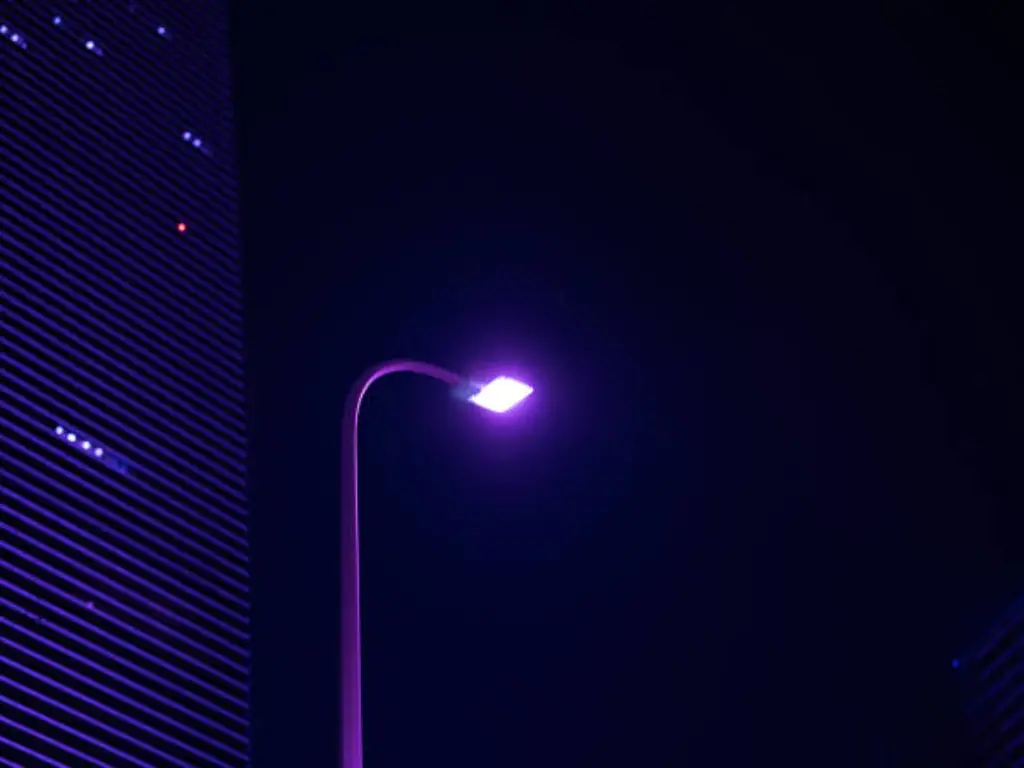
Impact of heat and weather conditions
Extreme temperatures and harsh weather conditions can accelerate the degradation of LED components, including the phosphor coating. In regions with high heat and humidity, such as Florida or Texas, LED street lights may be more prone to color shifts. Similarly, in areas with severe winter conditions, the constant exposure to cold temperatures and road salt can take a toll on the LED fixtures.
Manufacturing defects and quality control issues
In some cases, the purple street lights can be attributed to manufacturing defects or poor quality control. Inconsistencies in the application of the phosphor coating, use of subpar materials, or improper assembly can all lead to premature color shifts. This highlights the importance of stringent quality control measures in the production of LED street lights.
Are Purple Street Lights Dangerous?
With the prevalence of purple street lights, many have asked if purple street lights are public health safe. While the purple glow may be disruptive or unattractive, there is no known proof at this time that these lights are harmful to the human eye.
Although it has been established that it is harmless at this moment, it is relevant to acknowledge that the hue of the light can influence humans. There are experiments that have suggested in the past that blue light exposure during night hours can alter sleeping patterns and even affect the circadian cycle. The purple light meaning from street lights isn’t the same as the blue light from screens however it still raises concerns with several health experts.
Impacts of Purple Street Lights on Visibility and Safety
Impact on Drivers and Pedestrians: Safety Concerns
Streetlights are built to facilitate visibility and the ability to see features on the street when driving, this includes those using the sidewalk or bicycles. This reasoning offers further explanation as to why purple-street lights are not the desired option to go for as they emit a purple hue that can impact the overall quality of light emitted as well the overall colour rendering. As a result, it gets challenging for the driver to properly distinguish between the objects and people on the road along with road signs, for example, in a rainstorm or other similar conditions.
Another facts that inhibit the practice of using purple lights is the fact that in cities that use such lights, it is difficult to pinpoint the reasoning for using such colour besides aesthetic purposes. As a result, for some drivers this shift in normal colour use, proves to be a distraction because purple lights serve no purpose. As a result, even if there are no clear studies conducted that showcase a strong correlation between the use of purple street lights and an increase in accident rates, it does go on to serve as a area that needs further examination.
How Purple Lights Affect Urban Landscapes
Let’s say, purple lights would suit well artistic installations targeting peculiar outlines within the entertainment industry or even entertainment districts. Yet, in the case of residential and historical districts, such colors can do more harm than good as they can easily produce an undesired environment.
For example, Furthermore, the shade of purple is disruptive during astronomical visual surveying and adds to the already existing issue of light pollution. The International Dark-Sky Association (IDA)has expressed discontent regarding how LED street lights have profoundly altered the darker parts of the sky, and quite possibly, the light purple issues takes this to the next level. The increased light purple use may add to the change of how the stars and masked planets can be visualized which could be damaging to exploring one’s astronomy, especially at night.
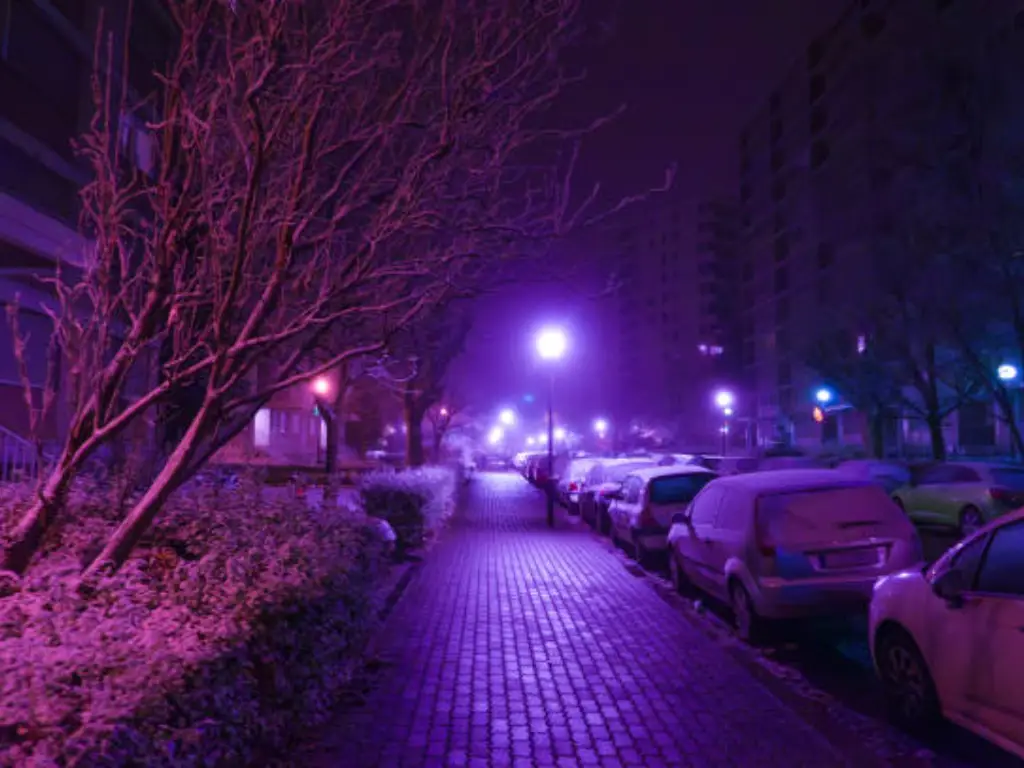
Are Malfunctioning LEDs Still Saving Power?
One of the main reasons for the shift towards LED street lights is that they are energy efficient. Thus, when such LEDs start shining purple, is there a sense to their power saving capability? The answer is not simple.
Generally speaking, while it is true that LED bulbs may decrease energy use, if the lights aren’t functioning that well still, they are not as useful and therefore diminish the positive impact on the environment that the use of LED in the first place serves.
From different angles, while broken LED street lamps might still use significantly less energy than HPS street lamps, the color shift may indicate efficiency downturn. It follows from this that the purple lamps may not be suitable for use due to the low value of the light output per unit. This can reduce expectation and lead to the need for compensatory light fixtures to add to because of the natural deficiency in overall light quality.
Future-Proofing: Preventing Similar Issues in LED Technology
As more and more cities consider transitioning to LED street lighting, municipalities need to ensure that similar problems, such as purple street lights, do not happen again. For starters, the lights needs to be regularly attended to and checked for any signs which indicated early degradation of the phosphor or change in color of the coating. Further, there should be more stringent practices adopted such that periodically, the performance of the streetlights is evaluated.
Furthermore, it is imperative for local authorities to work alongside lighting construction companies to guarantee that their requirements to the standard set for the streetlights, specifically its colorimetric endurance never shrinks below what is required. In a few urban areas, pilot projects have commenced, which are testing some alternative materials and coatings for LEDs to counteract their gradual fade, ensuring they are both functional and appealing longer.
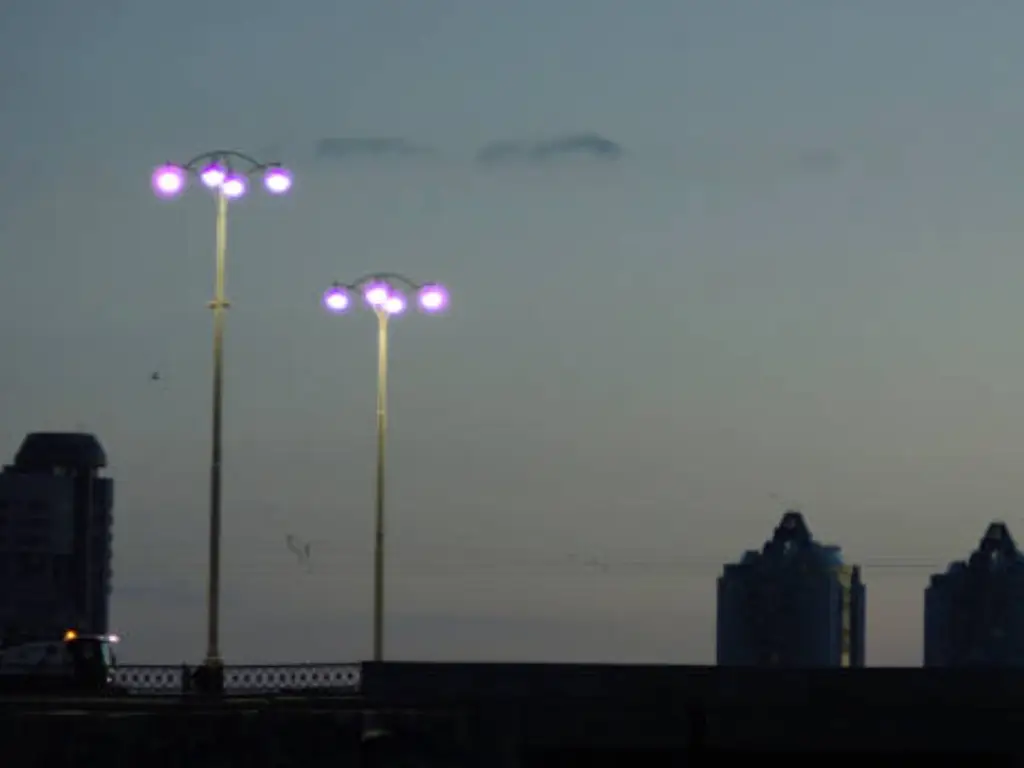
Manufacturers’ Perspective: Quality Control and Warranties
LED lighting manufacturers are in charge of resolving and in some cases preventing the occurrence of purple street lighting as well as other issues that may arise. String Al, dies and inspection regimes will ensure that defective products do not leave the factory premises even if they are found right before reaching the market. Further, investing into such valuable activities such as research and development is also recommended as it will ensure better stability and durability of such important components as not only phosphor coatings are key components but any other parts as well.
Ministries should also provide broad warranties that could cover color shifts and performance issues, or other similar issues that might be seen. This both boosts the confidence of the municipalities in the manufacturers and also encourages manufacturers to always produce good quality products.
Being one of the manufacturers of LED streetlight, towards the purple street light and other street light issues, we know that the secret lies in having a Click Here great level of quality control and test rigorous testing protocols. In the design of an LED bulb together with the reliability of the components and the durability of the phosphor coating, each bulb is constructed in such a way as to allow for high performance and a prolonged life. Once a LED streetlight is manufactured, we put them through a wide array of testing to ensure that there are no defects which greatly reduces the chances of faults like color shifts from occurring. Our LED street lights are purposely designed to have up to 50,000 hours of life with great engineering to back it up.
To ensure that municipalities do not have any worries, we back up all our products with a very competitive warranty, some even have a 3 year warranty. Moreover, our streetlights are IP66 waterproof grade hence highly protective to dust, water, and bad weather. In the never-ending quest for higher efficiency and stability of phosphor coatings and other critical components we never stop investing in research and development.
Conclusion
Recently, the case of purple streetlights has elucidated the problems and intricacies associated with the use of LED technology in outside lighting. Thus, it becomes increasingly critical to take care of the problems such as color shift and other performance issues as cities migrate to the adoption of LED street lights.
It is hoped that once the purple hue is better understood in terms of its root cause, namely phosphor degradation, external influences and manufacturing errors, more dependable and durable solutions towards LED lighting technologies can be designed. Without the active collaboration of manufacturers, municipalities and researchers, these barriers cannot be overcome, and the promise of the LED technology to enhance safety, efficiency, and the aesthetics of urban settings will not be realized.
To this end, it is expected that there will be an emphasis on quality assurance, funding in research and development, and the setting of the lantern post industry guidelines so as to guarantee the reliability and performance of LED streetlights in the longer term. Only then will it be better to enjoy the advantages of this new technology without having to deal with the side effects, such as the strange purple street lights mystery.
